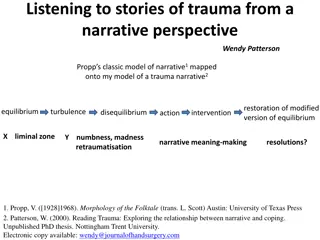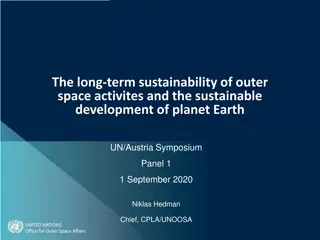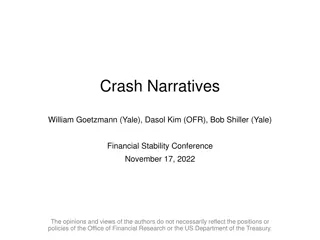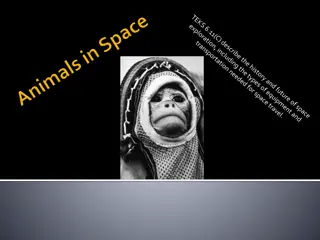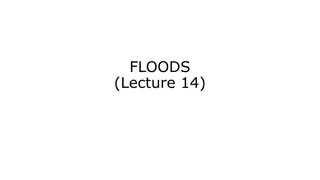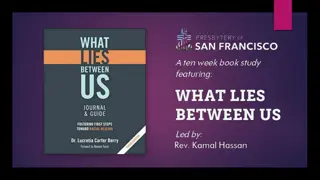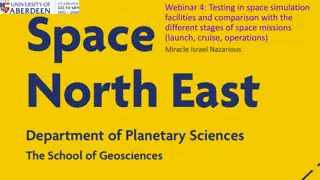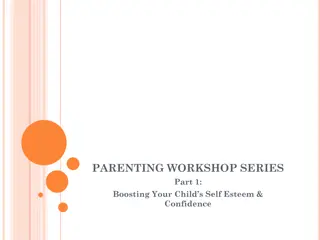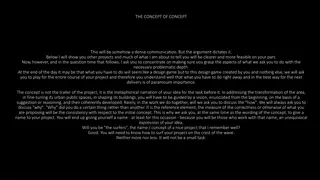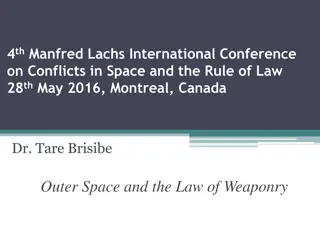Exploring Children's Narratives of Self and Space Through Environmental Engagement
Delving into children's everyday experiences and understandings of the environment in India and the UK, this research project aims to enhance comprehension of how family lives intersect with their surroundings. By analyzing narratives from 11-12 year old children in diverse spaces like home, school, and local areas, the study uncovers unique perspectives on self and space. The research involves various methods such as family interviews, cognitive mapping, and group activities at schools, offering valuable insights into the negotiated complexity of family-environment dynamics.
Download Presentation

Please find below an Image/Link to download the presentation.
The content on the website is provided AS IS for your information and personal use only. It may not be sold, licensed, or shared on other websites without obtaining consent from the author. Download presentation by click this link. If you encounter any issues during the download, it is possible that the publisher has removed the file from their server.
E N D
Presentation Transcript
Environment as a way into exploring children s narratives of self and space: Analyses from India and the UK Catherine Walker, NOVELLA-linked PhD student, Institute of Education In association with the University of Sussex
My PhD research: Childrens everyday experiences, understandings and practices of the environment in two countries Linked to NOVELLA Narratives of Varied Everyday Life and Linked Approaches, across-institutional NCRM-funded research node based at Institute of Education. Part of Family Lives and the Environment project: Overarching aim is to improve understanding of the negotiated complexity of family lives in relationship with their environments. Sample composed of 24 case families drawn from rural and urban contexts in Southern England and the state of Andhra Pradesh in Southern India. Research design comprises multiple methods designed to generate individual and collective reflection from family members on their environments, their everyday lives and how the two interact. Research activities carried out in English, Telugu or Hindi (through interpretation) in India.
Family Lives and the Environment: Research visits Home visit one: Whole family interview, family cognitive mapping exercise; whole family response to a short story (vignette); distribution of cameras. Home visit two: Walk with 11-12 year old child and main (self-elected) caregiver around their neighbourhood; individual interviews with the child and main caregiver; collection of cameras to be processed. Home visit three: Individual interviews with the child and main caregiver about photos taken; whole family discussion of photos selected from all three cameras; closing discussion with the whole family. School visit: Group activity with 11-12 year old child and four peers; interview with a teacher, tour of the school led by group activity participants.
My involvement in Family Lives and the Environment I conducted joint data collection with Family Lives and the Environment in both countries, and worked closely with the 11 12 year old child In my analysis I am exploring the narratives that the 11-12 year old children construct about their everyday lives by talking about their environment and their place within it, taking into account children s positioning in the different spaces where children spend time: home, school and local area. In this presentation, I will look at two cases in particular; Callum and family (Southern England) and Hemant and family (Andhra Pradesh, India).
Environment as a way into exploring children s narratives of self and space Environment as... Global and local (Massey, 2005; Holloway and Valentine, 2000; Heise, 2009) Natural, social and constructed more than social (Kraftl, 2013) In recent years, reconfigured with new meanings through climate change , an idea premised on the notion of interdependence of all human and natural life on the planet.
Meanings of rural and urban Panelli, Punch and Robson (2007) elaborate overarching differences in how childhood and rurality are understood in what they term Minority and Majority world contexts: In Minority world/Global North rural life can be idealised as peaceful, safe and appropriate for children. In Majority world/Global South rural life can be negatively counterpoised with the increasing educational and economic opportunities available for children in urban contexts. In both contexts, climate change may cause rural life to become increasingly associated with perceptions of environmental vulnerability and uncertainty.
Callum and Hemant All participant names included here are pseudonyms. Two boys selected as case studies for this presentation for ways that both draw upon global narratives in making sense of their local areas, how they perceived these to be changing, and their own lives in the contexts of these changes. Parallels in how their homes are situated in relation to the surrounding area both in fairly isolated rural areas surrounded by open fields, but both are close to a main road which connects them to their school (via a bus), shops and friends houses. Looking at their cases side by side may illustrate differences in the ways that rurality is characterised in relation to context-specific narratives of what makes a good childhood.
Callums photo of family chickens: Space to keep chickens (and more generally, to enjoy the surrounding area) seen by whole family as a benefit of living in the countryside.
Family talk about space in the area surrounding the house Jt. So is that one of the things I mean when we were talking last week about moving out into the countryside, away from town having space to have animals like that. Is that [one of the? = Cl. = Yeah, because I like we] K. Yeah, that s a bonus, I suppose. I would rather be in a town, but that s a bonus of being [able to have = Cl. = (I wouldn t rather be in a town (quickly))] K. Huh? Cl. I wouldn t rather be in a town. K. Um [bonus of being able to have animals = M. = I would hate being in a town = K. = and you know], no neighbours complaining about them. And you ve got the space for them as well. The chickens have got a fair bit of room to run around in outside. [Extract from family discussion of photos, home visit three. Jt. = Janet, interviewer, Cl. = Callum, 11 year old son, K. = Katrina, mother; M. = Marcus, 8 year old son]
Callum: Life in the countryside, and imagined life in the city C. OK. So in general would you say you're quite happy living here? Cl. Yeah (.) Because I don t want to live in a town where we'd get like lost every day on our way home. C. Hmm. Cl. Or like the tube that s like (sharp inhale of breath) squeezed up against everything. [Extract from individual interview with Callum. C. = Catherine, interviewer; Cl. = Callum] C. Um (.) could you just tell me kind of in one sentence and I know this is quite hard what's really important to you about your environment? Cl. (.) The fact like (.) that it isn t like (.) loads and loads of just buildings after buildings so we get lost. It's just like (.) nice and spread out. C. OK. Perfect. Cl. Because we don t have loads of buildings here. We just have a road and some buildings on each side. [Extract from individual photo discussion with Callum]
Callum: Childrens changing uses of space C. Is there anything that you um wanted to add to any of those topics that you - you haven t had a chance to say? Cl. Yeah. What like what kids do today (.) C. Hmm. Cl. Because like when there was like hardly any technology, like ev live every kid was out and about. C. Hmm. Cl. But today, because there's so many like games, Xboxessss, and everything (takes a deep breath). And also because like (.) people are getting more and more concerned about robbery, so they're like closing their land off (.) From the rest of the world, kids don t go out as much anymore. C. Hmm. Cl. Because if kids kept their land open and the roads were as safe as they were um like ( ) I would definitely be out and about. C. Hmm.
Callum: Childrens changing uses of space (cont.) Cl. But because of everybody closing their land off due to robberies and the roads getting faster and faster, due to better and better cars, like kids can't go out and about as much. C. Ah (.) Hmm. So do you miss - you know, would you like to kind of explore more if you could? Cl. Yeah. C. Hmm. Cl. And even like (.) people (.) let people um make um kids - let kids build like loads of dens and everything. C. Hmm. Do you mean in the past they used to? Or (.) in different places? Cl. Yeah. Like in um (like in farmer s woods (faster)) C. Ooooh [yeah = CL. = But because like they have] like shotguns and they're shooting the rabbits and they might shoot you for trespassing or something. [Extract from individual interview with Callum]
What kids do today Callum sdiscussion of what kids do today can be seen as an example of heteroglossia (Bakhtin) as he temporarily takes on the voice of an adult in discussing children s changing use of land, bringing up familiar adult topics such as technology, crime and fast cars. This extract troubles the familiar cultural narrative at other points engaged with by Callum and family of the idyllic and carefree nature of the rural world around them, referencing dangers and risks. The extract also shows how Callum sees childhood as changing, as understood and explained through his own use of space. Technology seemed to be of particular interest to Callum here evoked as a cause of changing use of space for children, but at other points talked about by Callum in terms of possibilities of opening up new (virtual) spaces and new ways of understanding the world around him.
Hemants family talking about threats to rural livelihoods V: There are bigger problems, but since we are on the coastal area, generally we are the ones who get hit first by typhoons and floods whenever it rains. H: We even face drought often. M: As this is coastal area and near the sea, there is the possibility of cyclones much more. Whenever the cyclones come they start from this place first. N: Uhum. M: Hemant is adding that they face drought also. N: Uhum. So how has that affected your family? M: When cyclones, typhoons and draught come, what kind of problems does your family face? V: If no crop comes out of the field, the family suffers. That causes problems. M: Crop failure. So if the crops fail, the family will be in trouble. N: Uhum (.) Have you experienced this? M: Did it happen to you anytime? V: We faced these problems many times. [ Extract from group discussion with family. V = Vignesh, father; H = Hemant, 12 year old son, M = Madhavi, Telugu speaking researcher, N = Natasha, English speaking researcher. Talk in bold is talk translated from Telugu]
Hemants talk of a recent flood as a disruption to family life H: We did not have much to eat at that time. M: What else? H: That s it. There were no vegetables. M: There was nothing to eat and there were no vegetables available. C: Uhum. So how did you get the food? H: After some days, the rice stored in some other place. M: Got it? Mmm. C: Ok, sure. How how long do you think it took for things to become normal again? H: [Uh = M = How many] day did it take for life to become normal again? H: I think nearly one month. C: Uhum.
Hemants talk of a recent flood as a disruption to family life (cont.) M: So in this one month, how did your family manage to get all these things? H: We just walked in the water wherever we went. M: But you had nothing to eat? How did you manage that? From where did you get food? H: From ration no, not ration. We got the rice from the place where it was stored for safety. M: Who stored the rice? H: Our family. M: Was it stored only by your family or the whole village stored it together? H: No. It is only for us. [Extract from individual interview with Hemant. M = Madhavi, Telugu speaking researcher, C= Catherine, English speaking researcher. Talk in bold is talk translated from Telugu]
Interactions between human and natural life Hemant sresponses tell of the family s preparation of emergency food provision in the event of extreme weather, showing the extent to which planning for the possibility of such events is a part of routine, planned everyday life. Hemant s responses also recount how, even after the family returned to the home, life continued to be disrupted and not normal for around one month after the flood. This shows close interactions between human and natural life, and how one impacts upon the other in the everyday, as well as at times of extreme weather.
Hemant: Houses in the aftermath of the flood H: = And and sometimes] uh, when peo when uh, the houses are dead, their houses are being uh, demolished and there are, um, so many rats and other animals. C: Mmm, so where is this? This is around your house you ve seen that houses are being demolished? H: Uh, before our street. C: Before your street? Aha. Do you know why that is? Is there any reason why those houses were demolished? H: Because no one is caring of that. C: Oh, ok. So they were abandoned houses, uhn. And the trees as well? You said that the trees had been cut down. H: Um because uh, due to the lack of, uh lack of uh, space to build a new house, the people are trying to cut down the trees. C: So how do you feel about that? H: I think that there is a lot of, there is a lot of increase in the global warming. [Extract from individual interview with Hemant. This exchange took place in English, although Madhavi was present, giving Hemant the option of communicating in English or Telugu]
Nature as wild and untameable In the above extract, Hemant seems to describe a situation of conflict between humans and the natural world, wherein non-natural appropriations of the space, when left abandoned, dirty or not cared for, are recolonized by nature. Within this context, Hemant s evocation of global warming resulting from trees being uprooted could be seen as another aspect of the process of nature fighting back in human-natural interactions. Hemant s characterisation of nature as wild and untameable at these points in the interview are congruent with his father s talk of natural calamities affecting the family: What can we do? The crops are still in the field. The natural calamities occur unexpectedly. What can anybody do in such situations? There is nothing anybody can do. [Vignesh, Hemant s father in group discussion] Within this context, school both as a symbolic and actual space takes on new meanings, becoming a way of perhaps minimising nature-human interactions.
School as a safe, comfortable space H: In school we can play lot of things and enjoy. And uh, learn lot of new things M: He is saying that he likes school because he learns lot of things (explaining to the rest of the family). N: You also like school, Anish? Yeah? What do you like about school? M: What do you like in school? A: They teach us lot of games. M: What else? A: When there is no school, we will be playing outside in hot sun. Whereas in school, we can stay in one place and play inside and there are fans and lights in the school. M: What do they have there? A: Fans and lights. [ Extract from group discussion with family. H = Hemant, M = Madhavi, N = Natasha, A = Anish, 10 year old son. Talk in bold is talk translated from Telugu]
Enjoyment of different spaces Whilst Hemant talks here about play and learning possibilities at school, Anish sevocation of fans and lights draws attention to school as a space where learning and play comfortably takes place regardless of time of day. This is in opposition to the outdoor space where in order to enjoy the light of the sun necessary for work, adult family members also have to undergo its scalding heat (as recounted by family members). Despite narrating his enjoyment of school at various points in the research, and what could be seen as a performance of the good student through his use of English, Hemant also speaks in various ways of his enjoyment of spending time on the family land.
Hemants photo of the family fields, a space of enjoyment, and the tree which he said gives him so much shade and oxygen .
Some closing thoughts Through Hemant and Callum, we see two boys making sense of their positioning in contexts where there are new possibilities for spending time, and see them constructing narratives of rural childhoods that involve both continuity and change. Both Callum and Hemant s stories speak of everyday dangers, as well as the enjoyment of the natural world. A multi-method design can allow for exploration of children s emotional interactions with the more-than-social . We see dialogical interplay in both boys talk wherein they appropriate multiple voices and media in making sense of global environmental processes and their positioning within these. At the level of analysis, being attentive to where speakers bring in narratives and influences from multiple sites (global and local) highlights the interconnectedness of global and local processes and how children s lives are part of the remaking of the local into the global and vice versa.
References Bakhtin, M. (1981) The dialogic imagination: Four essays. Holloway, S. & Valentine, G. (2000) Spatiality and the new social studies of childhood . Sociology, 2000 (34). Heise, U. (2009) Sense of place and sense of planet: The environmental imagination of the global. Kraftl, P. (2013) Beyond voice , beyond agency , beyond politics ? Hybrid childhoods and some critical reflections on children s emotional geographies. Emotion, Space and Society, 2013 (9). Massey, D. (2005) For space. Panelli, R., Punch, S. & Robson, E. (2007) Global perspectives on rural childhood and youth.
Any questions? Please send any feedback to: c.walker@ioe.ac.uk Institute of Education University of London 20 Bedford Way London WC1H 0AL Tel +44 (0)20 7612 6000 Fax +44 (0)20 7612 6126 Email info@ioe.ac.uk Web www.ioe.ac.uk
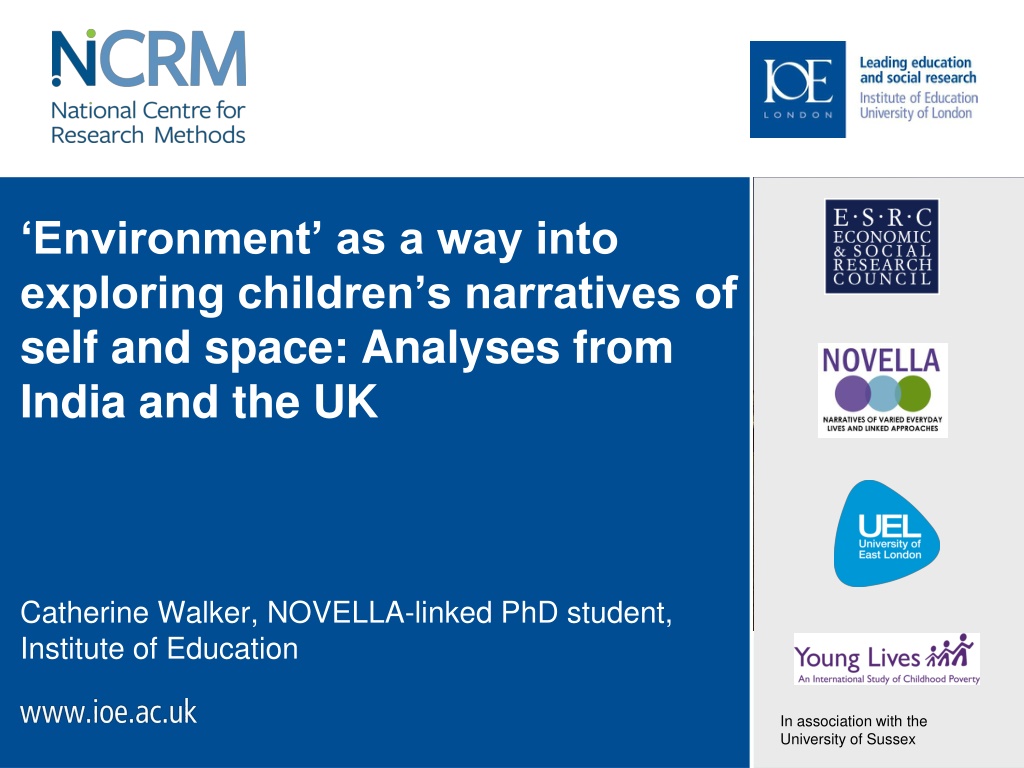

![Read⚡ebook✔[PDF] Linking the Space Shuttle and Space Stations: Early Docking Te](/thumb/21519/read-ebook-pdf-linking-the-space-shuttle-and-space-stations-early-docking-te.jpg)
![READ⚡[PDF]✔ Emerging Space Powers: The New Space Programs of Asia, the Middle Ea](/thumb/21554/read-pdf-emerging-space-powers-the-new-space-programs-of-asia-the-middle-ea.jpg)

